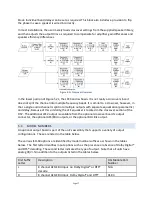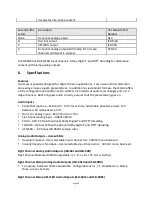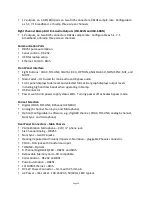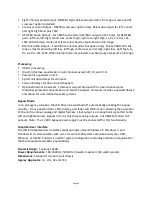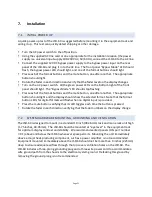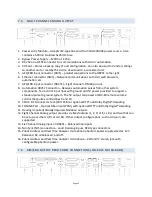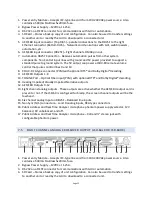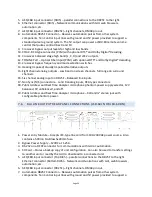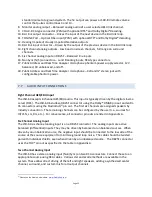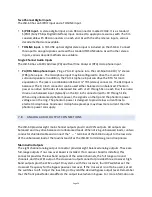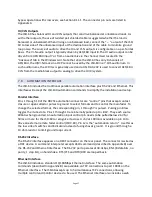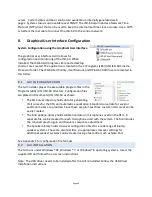
Page 13
5. System Overview
5.1
SYSTEM DESCRIPTION
The JSD-‐60 cinema sound processor is specially designed for digital cinema applications. Low
noise and low distortion 96 kHz processing ensures superb presentations. In addition to the six
standard formats. A user-‐configurable format button can be configured to support a variety of
existing and future formats. It may also be used to duplicate an existing format but at a
different fader level to simplify desired volume changes between content types. The front
panel display shows the current fader level, the format name (which is user configurable), and
the audio level on each audio output. The built-‐in bypass audio circuitry ensures that the
presentation goes on in the unlikely event of a system failure.
The JSD-‐60 is “automation friendly.” It features the standard DB25 parallel automation
interface, an RS-‐232 (EIA232) interface, and Ethernet. The Ethernet interface accepts 5
simultaneous TCP connections to allow control by a digital cinema server and other equipment
while simultaneously being monitored over another TCP connection.
The Graphical User Interface runs on Windows XP®, Windows 7®, and Windows 8® operating
systems. It allows for complete system configuration, monitoring, and firmware updates over
USB, Ethernet, or RS-‐232. The JSD-‐60 graphical user interface simplifies installation by including
sound pressure level measurement and automatic equalization. System monitoring, control,
and firmware update functions are also available on a standard web browser.
The JSD-‐60 includes a precision 1/3 octave RTA that uses the filters specified in ANSI S1.11-‐
1986. The JSD-‐60 also does sound pressure measurements using the C-‐weighted filter specified
in ANSI S1.4-‐1983. The RTA and SPL meter can be used to equalize an auditorium manually or
automatically.
The JSD-‐60 includes an automatic equalization feature (auto-‐EQ). Auto-‐EQ uses user-‐defined
microphone calibration files and standard or user-‐defined equalization curves to automatically
adjust the graphic equalizer on each channel.
The JSD-‐60 is also “diagnostic friendly.” The system logs the last 15,000 events (format
changes, level changes, internal temperature, loss of AES/EBU audio, etc.) to internal flash
memory. Log data can be reviewed on the GUI or the web interface. Current operational
status, including selected format, fader level, and measured audio output levels, is available on
the GUI and on the web interface. The current status of the system is also available over SNMP
(Simple Network Management Protocol).
An optional plug-‐in module decodes Dolby Digital® and DTS® encoded content.
The HI and VI-‐N outputs are configurable on a per-‐format basis.

















